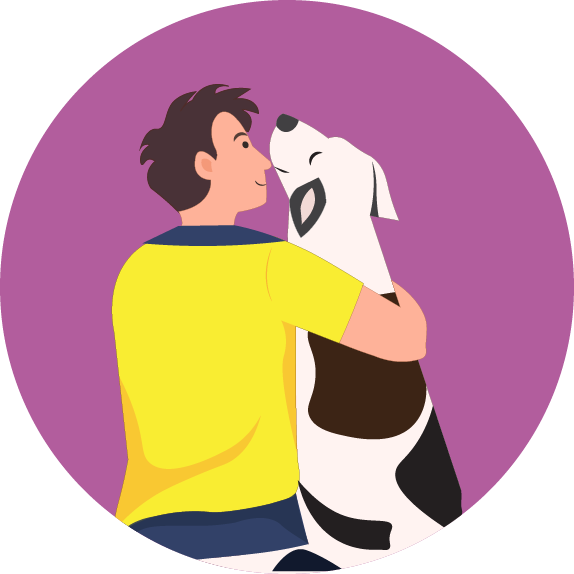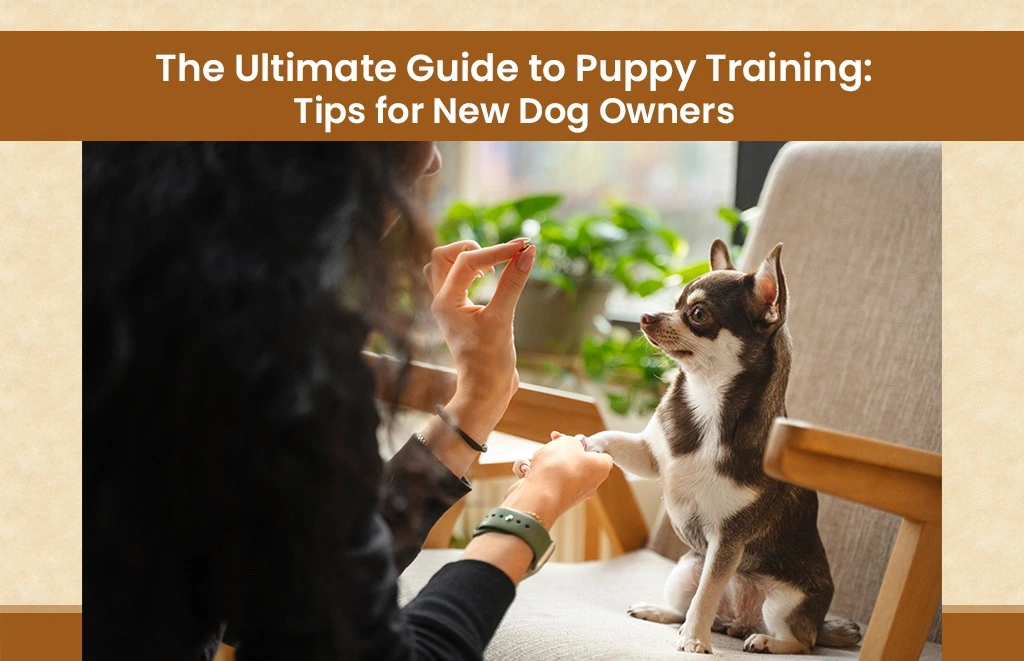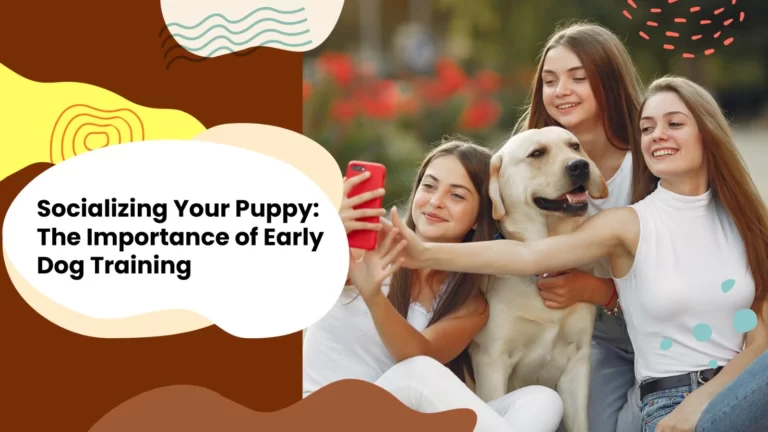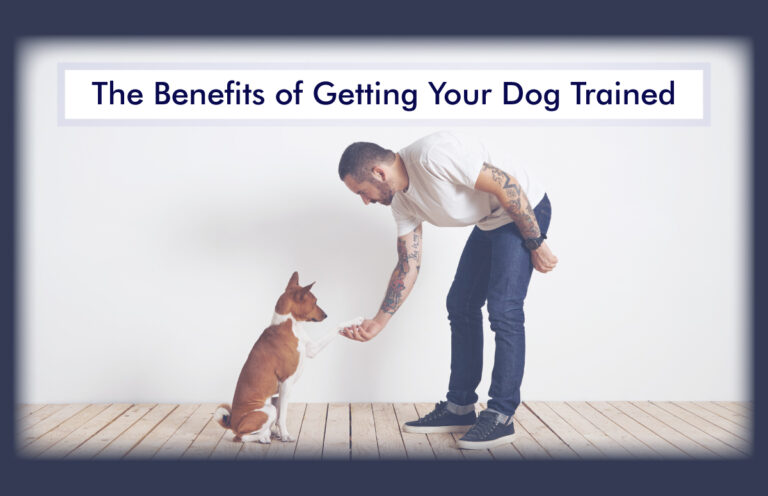The Ultimate Guide to Puppy Training: Tips for New Dog Owners
Table of Contents
- Introduction
- Importance of Dog Training
- Why Start Early?
- Common Mistakes, Challenges, and Solutions
- Effective Methods for Training Your Furry Friend
- Essential Commands
- Self-train or Hire a Professional Trainer
- FAQ
- Conclusion
Introduction
Dog training is the process of teaching your pup the skills and behaviours that will help them live happily and harmoniously with you and others. It involves positive reinforcement, consistency, patience, and fun. Puppy training also requires understanding your puppy’s needs, personality, and learning style. In this blog we will be covering the ultimate puppy training guide and tips for new dog owners.
Puppies are adorable, playful, and curious creatures. They are also like blank slates, ready to learn and absorb everything from their environment. That’s why the first few months of your puppy’s life are crucial for their development and learning.
Puppy training can be challenging but also very rewarding. You will see your pup grow in confidence, intelligence, and trust. You will also enjoy a stronger bond and a more fulfilling relationship with your furry companion.
Importance of Dog Training
Some may think dog training is optional or only for shows or service dogs. However, puppy training is essential for every dog, regardless of breed, size, or purpose. Here are some of the benefits of dog training:
- Safety: A well-trained dog is less likely to run away, get into fights, or cause accidents. They will also respond to your commands in an emergency or a dangerous situation.
- Behaviour: A well-trained dog is less likely to develop behaviour problems such as aggression, anxiety, barking, chewing, digging, jumping, or biting. They will also respect your rules and boundaries and follow your instructions.
- Socialization: A well-trained dog is more comfortable and friendly around other people and animals. They will also adapt better to new places and situations.
- Mental stimulation: A well-trained dog is more engaged and curious. Your canine friends will also enjoy learning new things and solving problems.
- Physical exercise: A well-trained dog is more active and healthy. They will also have more opportunities to play and explore with you and others.
- Fun: A well-trained dog is more fun and enjoyable to be around. Your furry friends will also make you proud and happy with their achievements.
Why Start Early?
When is the best time to start puppy training ? The answer is as soon as possible! Puppies are like sponges; they can learn quickly and easily at a young age. According to the American Kennel Club, the optimal window for socialization (exposing your puppy to different people, animals, places, sounds, etc.) is between 3 and 14 weeks of age. This is when your puppy’s brain is most receptive and flexible.
However, this doesn’t mean you can’t train your puppy after this period. You can still teach your pup new skills and behaviours at any age if you use positive reinforcement (rewarding good behaviour with praise, treats, toys, etc.) and avoid punishment (scolding, hitting, yelling, etc.). Punishment can damage your pup’s trust in you and make them fearful or aggressive.
The key is to start small and simple. Don’t overwhelm your pup with too many commands or expectations at once. Focus on one skill or behaviour at a time and practice it in short sessions (5 to 10 minutes) several times daily. Make sure to end each session on a positive note (with a reward or a game) so that your pup associates training with fun.
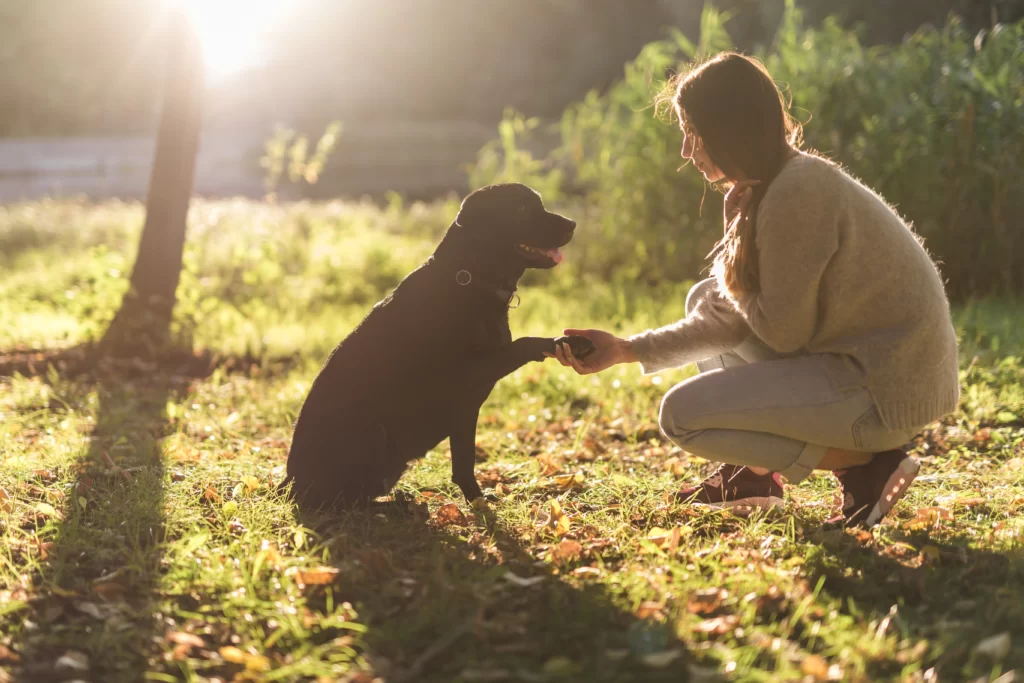
Common Mistakes, Challenges, and Solutions
Puppy training is not always easy or smooth. You may encounter some difficulties or frustrations along the way. Here are some of the most common mistakes, challenges, and solutions that you may face:
- Not Being Consistent: Consistency is key for effective puppy training. You must use the exact words, tone, and gestures for each command and behaviour. You also need to apply the same rules and consequences for each situation. For example, if you don’t want your pup to jump on the couch, you must stop them every time they do it, not just when you feel like it. Otherwise, you will confuse your pup and make them doubt your authority.
- Not Being Patient: Patience is another essential ingredient for successful puppy training. You must understand that your pup is not a robot; they have their own personality, mood, and pace. They may only learn some things right away or perform perfectly every time. They may also make mistakes or have accidents. Don’t get angry or frustrated with your pup; be calm and supportive. Remember that your pup is trying their best and wants to please you.
- Not Being Realistic: Realism is also essential for effective puppy training. You must set realistic goals and expectations for your pup based on age, breed, and individual characteristics. You must also adjust your training methods and techniques according to your pup’s needs and preferences. For example, suppose your puppy is energetic and playful. In that case, you may need more toys and games to keep them interested and motivated. If your puppy is timid, you may need more praise and treats to build their confidence and trust.
- Not Being Positive: Positivity is crucial for successful puppy training. You must use positive reinforcement (rewarding good behaviour with praise, treats, toys, etc.) and avoid punishment (scolding, hitting, yelling, etc.). Positive reinforcement will encourage your pup to repeat the desired behaviour and strengthen your bond. Punishment will discourage your puppy from learning and damage your relationship. Remember that your puppy is not trying to be naughty or disobedient; they are just learning and exploring.
Effective Methods for Training Your Furry Friend
There are many different methods and techniques for puppy training . However, only some are equally effective or suitable for some pups. Here are some of the most popular and proven methods that you can use:
- Clicker Training: Clicker training is a method that uses a small device that makes a clicking sound when pressed. The clicker is a marker to signal your pup that they have done something right and that a reward is coming. For example, if you want to teach your dog to sit, you can say “sit” and then click and treat when they do it. The clicker helps your pup associate the sound with the reward and the behaviour. Clicker training is exact, fast, and fun for you and your dog.
- Lure-and-Reward Training: Lure-and-reward training is a method that uses a treat or a toy as a lure to guide your pup into the desired position or action. For example, if you want to teach your puppy to lie down, you can hold a treat in front of their nose and lower it to the ground until they follow it with their body. Then, you can praise and reward them with a treat. Lure-and-reward training is simple, easy, and gentle for you and your pup.
- Shaping: Shaping is a method that uses successive approximations (small steps) to teach your pup a complex behaviour or skill. For example, if you want to train your puppy to roll over, you can begin by rewarding them for lying down, then for turning their head to one side, then for lifting one paw, then for rolling halfway, then for rolling all the way over. Shaping is creative, flexible, and challenging for you and your pup.
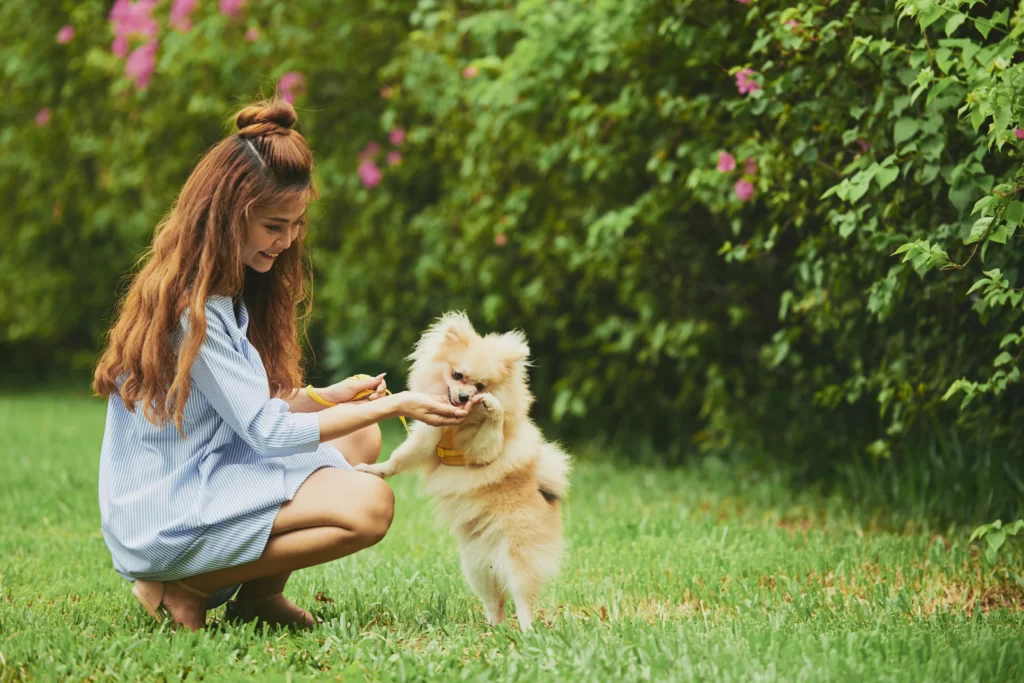
Essential Commands
There are many commands that you can teach your puppy, but some of them are more essential than others. Here are some of the most important commands that every puppy should know:
- Sit: Sit is one of the easiest and most useful commands you can teach your puppy. It helps them calm down, focus on you, and wait patiently. As described above, you can use the clicker or lure-and-reward method to teach sit.
- Stay: Stay is another crucial command that you can teach your puppy. It helps the puppies stay in one place until you release them with another word (such as “okay” or “free”). To teach stay, you can ask your puppy to sit, then take a step back, saying “stay” and holding your hand up like a stop sign. Then, return to them quickly and reward them with praise and a treat. Slowly increase the distance and duration of the stay as they improve.
- Come: Come is a vital command that you can teach your puppy. It helps them return to you when you call them, especially in an emergency or a dangerous situation. To teach come, you can start by putting your puppy on a leash and letting them explore a safe area. Then, say their name, “come” enthusiastically, and gently tug on the leash. When they come to you, reward them with praise and a treat. Gradually increase the distance and difficulty of the come as they improve.
- Leave it: Leave it is a helpful command you can teach your puppy. It helps them drop or ignore something they shouldn’t have or could harm them. To train to leave it, you can start by holding a treat in your closed fist and letting your puppy sniff it. Then say, “Leave it”, and wait until they stop trying to get it. When they do, reward them with praise and another treat from your other hand. Gradually increase the value and temptation of the item you want them to leave as they improve.
- Heel: Heel is a helpful command that you can teach your puppy. It helps them walk politely by your side without pulling or lagging behind. To teach heel, you can start by holding a treat near your hip and letting your puppy follow it. Then say “heel” and walk forward at a steady pace. Reward them with praise and a treat when they stay by your side. Gradually increase the speed and direction of the walk as they improve.
Self-train or Hire a Professional Trainer
One of the questions that you may have is whether you should train your puppy by yourself or hire a professional trainer to help you. The answer depends on several factors, such as your budget, time, experience, goals, and preferences.
Puppy training can be cheaper, more convenient, and more rewarding. You can schedule your training plan according to your pup’s needs and personality. However, training your puppy yourself can be more challenging, time-consuming, and frustrating. You may need more research, trial and error, and problem-solving.
Hiring a professional trainer can be more expensive, less flexible, and less personal. You may also need to follow their instructions and methods with little input or feedback. However, hiring a professional trainer can be more effective, faster, and easier. You can benefit from their experience, expertise, and resources.
The best option for you may be a combination of self-training and professional training. You can train your puppy for basic skills and behaviors you want them to learn and then hire a professional trainer for more advanced or specialized ones.
FAQ
Here are some of the frequently asked questions that you may have about puppy training:
- How long does it take to train a puppy? This question has no definitive answer, as it depends on many factors, such as your pup’s age, breed, temperament, learning style, motivation, and environment. It also depends on what you want to teach them and how consistent and patient you are. Generally speaking, training your puppy for basic commands and behaviours may take a few days to a few months.
- How often should I train my puppy? You should train your puppy every day for short sessions (5 to 10 minutes) several times a day. This will help them retain what they learn and prevent boredom or fatigue. You should also practice the skills and behaviours you teach them in different settings and situations throughout the day.
- How do I potty train my puppy? Potty training is one of the most critical and challenging aspects of puppy training. The key is establishing a routine, supervising your pup closely, and rewarding them for doing their business in the right place. It would be best to take your puppy outside frequently (every hour or two), especially after they wake up, eat, drink, or play. You should also use a cue word (such as “go potty”) when they are doing their business and praise and treat them when they are done. You should also avoid scolding or punishing them for having accidents inside; instead, clean up the mess quickly and thoroughly with an enzyme-based cleaner to remove any odour.
- How do I crate-train my puppy? Crate training is another important and beneficial aspect of puppy training. A crate is a safe and cosy place for your pup to sleep, rest, or stay when you are away or busy. It can also help with potty training, as most dogs don’t like to soil their den. To crate train your pup, you should introduce them to the crate gradually and positively. It would be best to make the crate comfortable and inviting with bedding, toys, treats, etc. You should also feed them in the crate or give them a stuffed Kong or chew toy when they are in the crate. It would help if you never used the crate as a punishment or left them in there for too long.
Conclusion
Puppy training is an essential element of raising a happy and healthy dog. It can also be a fun and rewarding experience for you and your pup. Following the tips in this guide, you can start your puppy training journey on the right paw and enjoy the results for years. Happy training!
